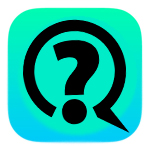 Messaging is a fiery battleground right now. SMS, the carrier-controlled traditional text messaging is becoming obsolete. And because it's relatively expensive and packed with few features, it is thought to die eventually, sooner or later. Since the internet has intervene with the global information transactions, messaging is evolving. Tech giants and startups are competing to create something for an innovation.
Messaging is a fiery battleground right now. SMS, the carrier-controlled traditional text messaging is becoming obsolete. And because it's relatively expensive and packed with few features, it is thought to die eventually, sooner or later. Since the internet has intervene with the global information transactions, messaging is evolving. Tech giants and startups are competing to create something for an innovation.
Instant messaging on mobile devices started to get traction when BlackBerry offered BBM (BlackBerry Messaging) and Apple with iMessage. These platform-based options that are baked into the operating system are exclusive. After that, there's cross-platform services like Facebook Messages and Google Hangout, which allow users to communicate across different platforms, like from desktop, mobile, and sometimes email. There are also mobile-first startups like WhatsApp, WeChat, Kik, KakaoTalk and others that aim for speed and group messaging.
Since the late 2013 to the early 2014, the messaging wars went from warm and to red-hot. Some major advances are highlighted by Twitter that rolled out new apps for iOS and Android that prioritize messaging, and began allowing people to send private photos, Instagram that announced its own version of private messages, with pictures that can be sent to individual users or small groups, and Kik that announced it had hit the 100 million user milestone.
In a war, there will be a victor. However, the messaging war isn't seem to be that way. The war is giving everyone that participate to win because at the moment, everyone is still carving their territory. These messaging services are competing with one another, but they aren't. Or at least, not yet.
This is because each and every messaging services "borrow" features from others, but at the same time, encompass different types of behavior. For example, some services are meant to become a pure SMS replacement, while some others are approaching social interaction. By having their own unique property, it's most unlikely that they will prevail. Different apps will serve different needs for different kinds of messaging.
The social giant Facebook has its own Messenger. To most Facebook users, this is one of the most familiar feature the social media is offering. With it, users can chat with their friends from a desktop web browser, or from their mobile devices. They can send and receive messages within the core Facebook app, or by using the Messenger app. They can send them to groups, and to individuals who aren't even their friends yet. Facebook's Instagram also allow users to send photos and videos privately to groups or individuals. And it's all free to use.
The microblogging service Twitter also allow users to send direct, private messages to others. This is one of the earliest feature the company offers, dating back to November 2006.
WhatsApp is a growing phenomenon in the current cross-platform mobile-first messaging service. With its 350 million active users and counting, it's becoming an SMS/MMS replacement that anyone can use for free (free for a year and 99 cents for the year after). With it, users can send messages to individuals or group, send videos, pictures, and almost anything else that they can do with traditional messaging.
Snapchat on the other hand, approach users in a slightly different way. The service allow users to send ephemeral photos that are almost impossible to save and reshare. Although Snapchat was seen to be a competitor to Twitter or Instagram, it's totally in a different league. Snapchat is about sending private photos with short snippets and text, in a way that is different from Twitter or Instagram.
Kik is also becoming popular, especially among teenagers. Its service provide features similar to Whatsapp, more or less. But it behaves slightly different. Snapchat that can run on mobile devices that aren't phones like the Apple's iPod, doesn't need a phone number to register like WhatsApp or Snapchat.
The cross-platform mobile first messaging service industry is growing fast. With more mobile device vendors and operating system competing, the once exclusive BBM was eventually made cross-platformed. After the long awaited rumor and waiting, starting in September 2013, users can use BBM on iOS and Android. Its popularity also made Facebook acquired WhatsApp for a massive price tag.
Moving to parts of Asia, LINE KakaoTalk and WeChat are becoming astonishingly big. These messaging services give similar feature with added "asian" spices to it, making them a bit more colorful and loaded with added features.

Conclusion
In a war that everyone seems to be winning, each and every service co-exist with one another. There is no reason why these services can't get along because all of them provide unique roles. Although their user base varies, they co-exist also because they are complementing one another: no messaging service is flawless, or even near perfection. But by combining all of them, these services are are evolving the whole messaging ecosystem. And this is one reason why people installs more than one messaging service on their mobile device.
However, with more than 20 different ways for users to send messages from their mobile devices, they can be overwhelmed. Since all services offer similar features, people need to choose whether they want to use Facebook, Twitter, Instagram, WhatsApp, Telegram, AOL Instant Messener, Wut, LINE, Viber, Kik, Tango, Skype or others, to just send a simple text message, for example.
The messaging war has given an ecosystem there apps are overloading the customers. Free of charge, small to download, easy to install and used by many people, messaging has quickly become a promising industry where apps may burden rather that provide luxury.